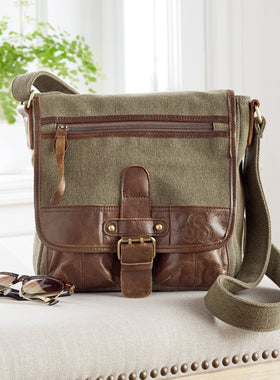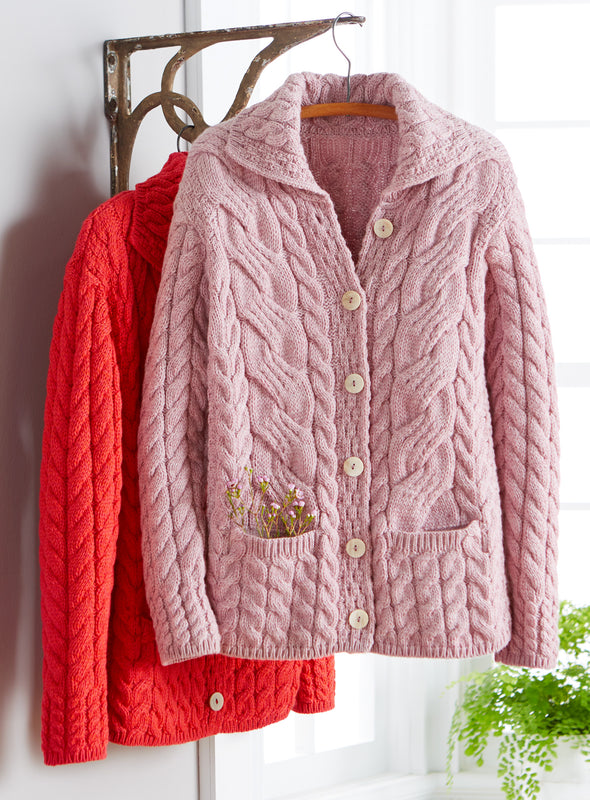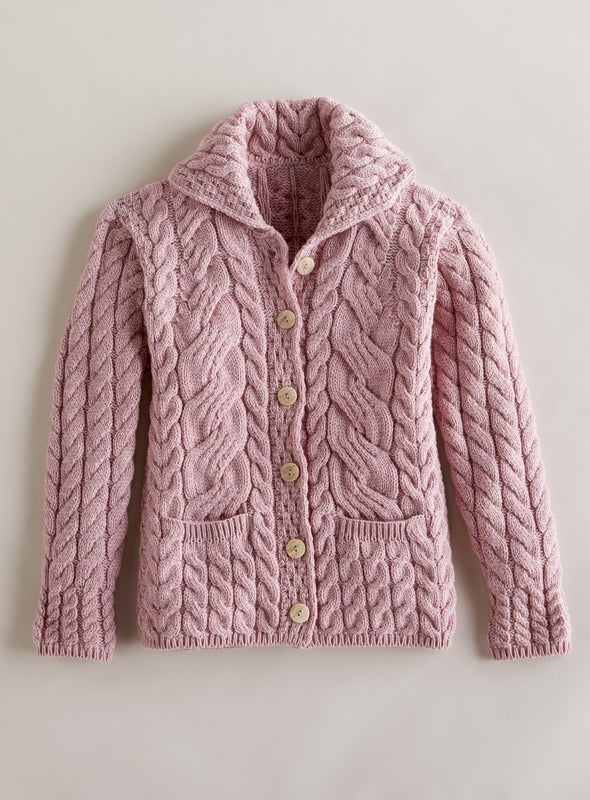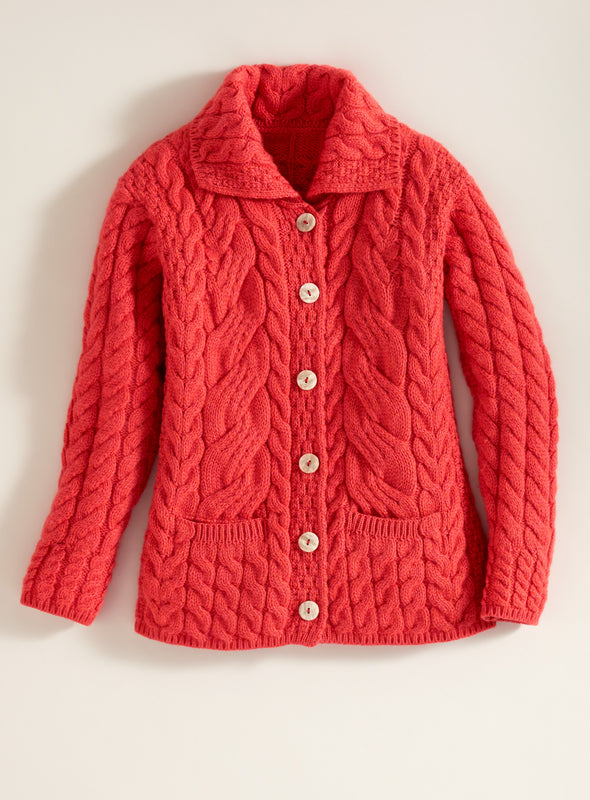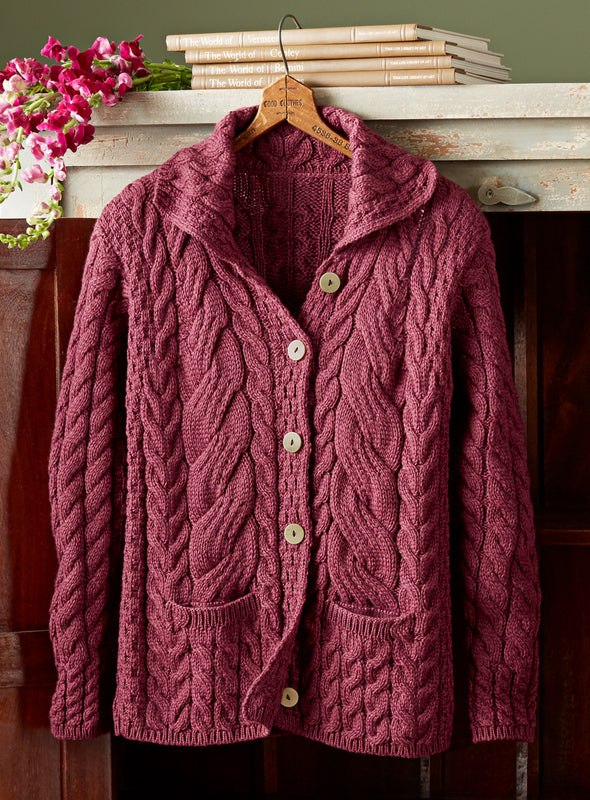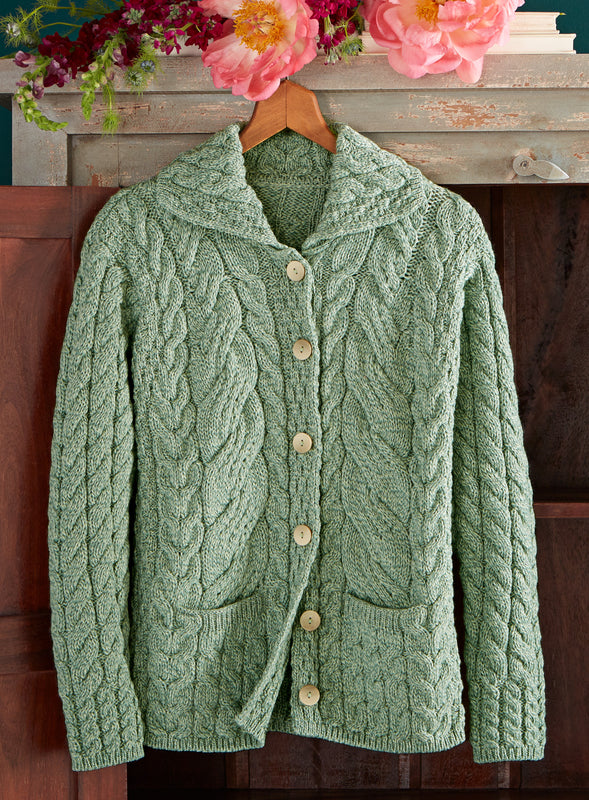How does a 1902 play still help sell thousands of sweaters?
In Irish author J. M. Synge’s one-act play “Riders to the Sea,” a young woman is able to identify her drowned brother by his knit socks that have washed ashore. This bit of poetic license gave rise to one of the most enduring and romantic stories about Aran Islands knitting—that each family on these tiny islands off the coast of Galway has its own stitch pattern, like a Scottish clan tartan.
While it’s true that there are hundreds of unique Aran stitches and each skilled knitter has her own specialty and style, Synge’s character actually recognized the socks by the dropped stitches, the mistakes that she remembered making.
Legends aside, the true story of Aran stitches is one of tradition, community, and craftsmanship. Homespun sweaters were often made for little boys on the occasion of their first Holy Communion, with intricate patterns and details befitting such an important event. Then, around the turn of the 20th century, the Irish home crafts movement emerged as a way to bring much-needed income to rural communities. That’s when the iconic Aran Islands sweater really became an Irish tradition.
Mothers and daughters, neighbors and friends gathered to knit and chat, trading stories and sharing skills. Patterns were developed and perfected: cable knits that represent the ropes of fishing boats, honeycomb stitches to evoke the rewards of hard work, basket stitches represent a plentiful catch. Returning emigrants and relatives from other counties brought outside influences that further enhanced the Aran stitch vocabulary. Moss stitch, blackberry stitch, diamond stitch, braided cables, zig-zags... More than 100 years after the craft first flourished, innovations in stitch and style ensure that Aran Islands sweaters are as sought after as ever.














